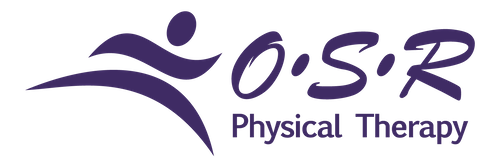
If you’re experiencing chronic pain, you are not alone. Currently, over 25.3 million Americans report having chronic pain in their life. Several conditions cause this chronic pain. Some of these are from prior existing medical conditions – such as MS, fibromyalgia, arthritis, or cancer. Other reasons for ongoing pain can be from something acute – like an injury or serious infection. However, for many Americans, the reason for the chronic pain is harder to determine as perhaps it’s occurred over a long period with no known beginning or reason. Many Americans experience this type of pain as being back and knee pain, as well as headaches.
Chronic pain makes it difficult to live life fully, much less enjoy it. Furthermore, it makes it difficult to partake in physical activity. Where once you were running around outside as a child or young adult, now you find it difficult to even do everyday tasks without being in pain. There may be a way to become physically active despite your chronic pain, and it may just help you even manage it.
What Is Chronic Pain?
There are two very different types of pain that people experience – chronic and acute pain. Acute pain is what most people see a doctor for or head to the emergency room for – due to an accident or injury. According to the American Academy of Pain Medicine, acute pain is the body’s way of alerting you to a possible injury. It usually happens suddenly and is the result of an accident or one moment in time – such as a fall or misstep leading to an injured knee, for example.
Chronic pain, on the other hand, is very persistent and it’s sometimes hard to tell exactly the reason for it. Chronic pain must last every day for longer than three months for it to be considered chronic. Even though chronic pain lasts for a long period, it may have occurred from something acute initially that was not treated properly or fully – such as an injury that was rehabilitated in the right way.
Many people who report having chronic pain also report having difficulty being physically active or having the desire to exercise. Even though it may seem counterintuitive, being physically inactive may be working against them and even contributing to the severity of their pain.
Recent research suggests that there is a direct link between physical activity and pain management. Studies have found that physically active people were 28% less likely to have chronic widespread pain. This link between exercise and pain management is good news for those with chronic pain who not only want to be able to manage their pain but also get back to being physically active.
How Do You Start An Exercise Program?
So if someone with chronic pain should be exercising, what are the best exercises to do and how do you do it safely without increasing pain? The answer lies in the type of chronic pain you are experiencing. A physical therapist is the best-trained individual to help with exercise as part of a pain management program. After assessing your condition and pain, they will recommend a treatment program for you as well as give a constant evaluation to ensure the exercise is not making the pain worse.
Here are some common exercises that a physical therapist might prescribe to you depending on your condition. It’s important that before trying any of these exercises, you should make an appointment with a physical therapist first. They will create an individualized program for you depending on your condition.
1. Walking
If you are capable of walking, it is one of the best forms of low-impact physical activity for those with chronic pain. It can be done anywhere – from a treadmill inside to outside. You can even do it standing in place. Researchers have found that walking increases blood flow, which can reduce stiffness and pain in the body.
2. Swimming Or Water Exercises
Water can help relax muscles, which helps reduce pain and inflammation in problem areas. The buoyancy of water is good for those with musculoskeletal or joint pain. Because of the gentleness and low impact of the exercise, and the water’s ability to unload weight, exercising in a pool is a great option for those who have pain while standing or bearing weight.
3. Yoga
One of the greatest reasons why yoga is so effective for pain management is its focus on deep breathing. Furthermore, it also focuses on proper breathing techniques. Improper breathing – or taking shorter breaths – can contribute to pain. However, with proper and deep breathing, pain can be more manageable. The right kind of yoga can help with this. It’s important to remember that not all yoga is gentle or slow, and can instead agitate certain conditions if you’re under the guidance of a knowledgeable professional.
Quick Tips For Chronic Pain Management
It’s important to always check with your doctor and physical therapist before starting an exercise program. A physical therapist in particular will make sure that you’re doing the right exercises properly and that they will not worsen your pain. Keep in mind that you will need to start slowly and gradually to avoid overdoing it; this is where you’ll need patience with yourself and move at your own pace. Most importantly, it’s important to follow the instructions of the person caring for you and to maintain consistency and balance.
